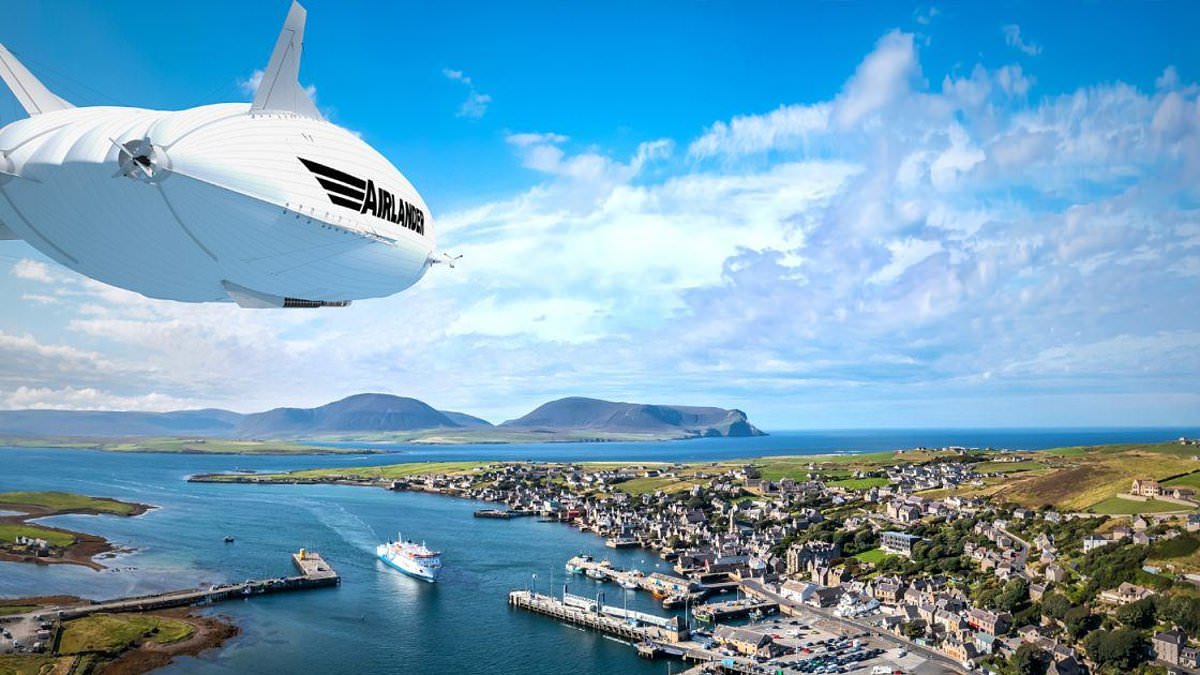People living in remote parts of Scotland could see their travel options soar as academics explore the use of e-planes to provide vital transport links.
An electric powered plane, cargo drones and hybrid aircraft have already undergone test flights to and from Orkney and now there’s a push to see how their use can be expanded.
Kirkwall Airport, Orkney, is the base for the UK’s first operationally based low-carbon aviation test centre because it has all the operational constraints of an airport – scheduled air services, general aviation, oil and gas helicopters, military traffic – without being too busy.
It is also in a meteorologically and geographically challenging setting typical of the Highlands and Islands.
The University of the Highlands and Islands (UHI) is part of the Sustainable Aviation Test Environment (SATE) partnership, which runs the centre with the aim of improving rural connectivity, support emergency provision, and develop new economic opportunities throughout the region.
A spokesperson for UHI said: ‘The project has already extended to Shetland and will further extend to other airports in the Highlands and Islands including Inverness and the Western Isles in the future.
‘By flying, or assessing, these aircraft against real-world use cases in an operational airport and airspace environment, SATE partners have been able to get a better understanding of their true economics and capabilities.’
The university is now looking for a company to explore the feasibility of electric aeroplane transport in the Highlands and Islands being used on scheduled airline routes, for offshore energy services, by the NHS and the Royal Mail, and for environmental surveys. The study would assess the social and economic benefits of low-carbon aviation technology for businesses, public services, and local communities.
Andrew Rae, Professor of Engineering at UHI, said: ‘By measuring the performance and true socio-economic impact of these aircraft, SATE partners will be in a position to explore the realities of the commercialisation of these services and help direct investment in sustainable aviation across the Highlands and Islands.
‘Public support has been a significant and highly encouraging element of the work, with the realisation that “green” sustainable aviation technology can improve the resilience of communities and businesses.
‘Improving connectivity while simultaneously reducing environmental impact is an objective worth chasing, and if it can work in the challenging environment of the Highlands and Islands, it can work anywhere.’
Within the SATE project, a variety of alternatively powered and autonomous aircraft have been assessed, some physically, some virtually. They include hybrid aircraft – Ampaire’s hybrid electrical aircraft – Hybrid Air Vehicles’ airship Airlander, seaplanes by Cormorant, all-electric aircraft, hydrogen electric aircraft by ZeroAvia and Cranfield Aerospace Solutions, and autonomous drone aircraft by Windracers, Flarebright and ARC Aerosystems.
A spokesman for Ampaire, who manufactured the Electric EEL hybrid six-seat Cessna, said: ‘The Highlands and Islands offered a unique opportunity to showcase sustainable aviation, and Ampaire is proud to have helped advance this vision. Following our successful 2021 flights in Orkney and across the UK, we’ve demonstrated the broad applicability of hybrid-electric aircraft in diverse, real-world settings.
‘In 2023, our flights in Alaska proved the technology’s reliability in remote, rugged regions, while earlier operations in Hawaii highlighted its seamless integration into inter-island travel. Our larger Eco Caravan, with increased payload and range, has shown that scaling up sustainable aviation is practical and impactful.
‘Ampaire’s hybrid-electric solutions stand out by delivering sustainability benefits without sacrificing range or payload, addressing the challenges of regions like the Highlands and Islands. Importantly, our technology works with existing infrastructure, avoiding the costly upgrades required by hydrogen or all-electric approaches. This ensures operators can transition quickly and efficiently.
‘By taking early action to evaluate, learn, and adopt these solutions, the Highlands and Islands can be positioned to lead the way in meeting net-zero targets while maintaining economic viability and connectivity. Ampaire looks forward to supporting the region in demonstrating how sustainable aviation can benefit both people and the planet.’
Windracers is also working with SATE, flying their pilotless cargo aircraft ULTRA between the islands of Eday, Westray and North Ronaldsay several times each week to deliver packages and medical supplies.
A spokesman said: ‘We aim to demonstrate our readiness to operate a commercial drone service that can transport meaningful payloads reliably, cost-effectively and sustainably for the benefit of communities in remote locations, such as the Highlands and Islands.’
